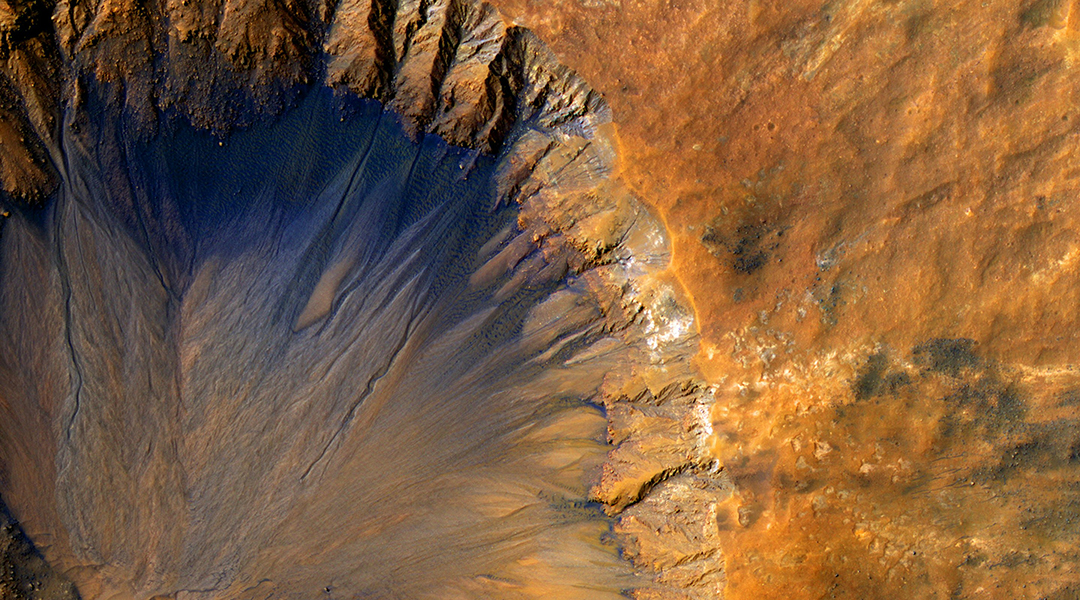Mars has emerged as the leading candidate for human expansion. Its proximity to Earth, abundant amounts of sunlight and ample water trapped in ice makes Martian colonies theoretically plausible. One significant challenge though is Mars’ thin atmosphere.
To heat Mars and thicken its atmosphere in preparation for human settlement, scientists have proposed that microscopic nanorods could be released into the Martian sky to accelerate the necessary greenhouse effect. The subsequent rise in temperature would melt ice and release more CO2, trapped in solid form on Mars’ surface, significantly increasing atmospheric pressure.
Using Mars’ own resources
Due to a lack of magnetic field, Mars’ atmosphere was long ago stripped away by solar winds. Multiple strategies to thicken the Red Planet’s atmosphere have been proposed but require large quantities of resources, like greenhouse gases, be brought over as they aren’t abundant on Mars.
With today’s current technology, the journey to Mars takes roughly nine months, and the first colonies will have limited supplies because space aboard any spacecraft will be limited. Like past explorers, the success of these settlements hinges on acquiring and using materials already available on Mars.
Inspections of the red dust covering the planet show a composition rich in minerals. According to modelling performed by a team of researchers working in the US and UK, engineering mineral rich dust and releasing it as an aerosol could warm the planet and kickstart the thickening of the atmosphere.
“The planet is abundant in resources, we just need to be clever with how we use them,” says Conor Boland, a materials scientist at the University of Sussex who wasn’t involved with the modelling study. “And this is a very clever piece of work.”
Edwin Kite, planetary scientist at the University of Chicago and co-author of the modelling research published in Science Advances, describes how hypothetical aluminum or iron nanorods roughly nine micrometers in length manufactured from Martian dust could increase the greenhouse effect.
“When released into the Martian atmosphere, they’re designed to trap heat and forward-scatter sunlight” he said. “Our models suggest that releasing about 30 liters of nanorods per second could warm Mars by over 30 Kelvin,” Kite said. This increase would start to melt subsurface ice and release CO2 increasing atmospheric pressure. “This would be an important step toward allowing a photosynthetic biosphere on Mars,” said Kite.
According to Boland, “the author’s work further cements that any potential endeavor to Mars can be very sustainable.” Boland previously demonstrated how nanomaterials of the size described in Kite’s models could be sustainably produced by a future Mars colony. He believes it is possible to manufacture and release the nanorods but notes several potential hurdles.
One being the nuisance dust poses for machinery. “Dust is quite a large problem with regards to our past experiences in space,” he says. “Lunar dust causes quite a lot of problems with regards to landers and instruments. Same with the curiosity rover on Mars,” he explained.
A future of unknowns
Kite too notes several unknowns that need to be considered including the long-term behavior of the nanorods in the atmosphere and the specifics of manufacturing the engineered dust.
Importantly too, the results described by the models would not make Mars immediately habitable. “The resulting atmosphere would still be much thinner than Earth’s,” Kite said. This work does, however, show the potential for multiple technologies to converge toward successful terraforming.
“Future synthetic biology approaches might involve engineered microorganisms that could survive in the warmed conditions and potentially produce oxygen,” Kite said. Paving the way for a more hospitable environment for humans seeking to establish the first extra-terrestrial human settlement.
Reference: Samaneh Ansari, et al. Feasibility of keeping Mars warm with nanoparticles, Science Advances (2024). DOI: 10.1126/sciadv.adn4650
Feature image credit: NASA on Unsplash

















